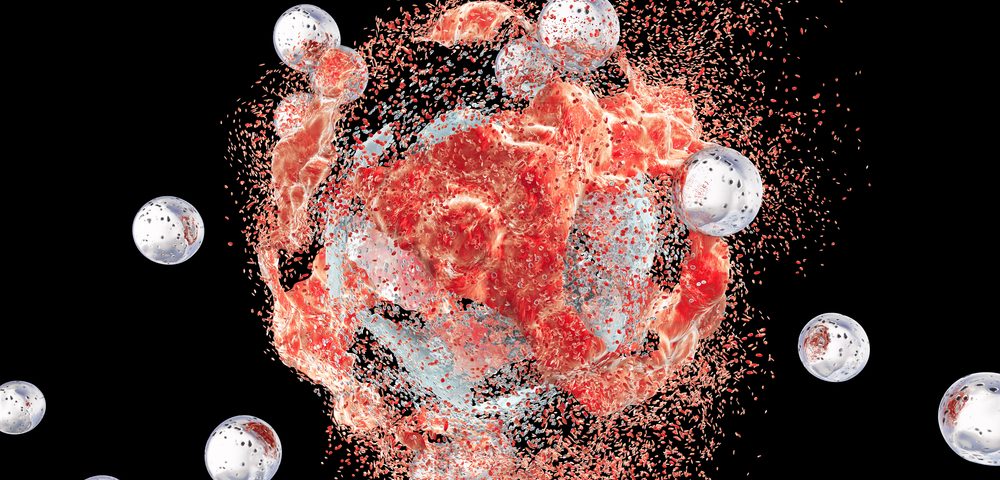Combinations of certain anti-cancer therapies are more effective against castration-resistant prostate cancer if the drugs are packed within serum albumin, the most abundant protein in blood plasma, a new study shows.
The study, “Self-assembled albumin nanoparticles for combination therapy in prostate cancer,” was published in the International Journal of Nanomedicine.
Although several treatments are available for prostate cancer, most cases develop resistance to treatment after several therapeutic cycles. This results in poor prognosis and low survival rates.
Combining chemotherapy with two therapies that use radiation of a specific wavelength to activate drugs (photothermal and photodynamic therapy, or PTT/PDT) has proven to be successful in anti-cancer treatment. The agents used in this combination therapy, however, are limited by two main drawbacks: they are hydrophobic (not soluble in water) and easily eliminated from the body.
One way to enhance the water solubility of hydrophobic drugs is to encapsulate them within human serum albumin (HSA). This is a safe and efficient strategy, since HSA is normally present in blood.
Researchers at the Medical School of Nanjing University in China developed a system using HSA to deliver the PTT/PDT agent, IR780 (a near-infrared dye), and the chemotherapy agent, docetaxel (DTX). The resulting multifunctional nanoparticles were referred to as HSA@IR780@DTX.
PTT agents are drugs that kill cancer cells by heat. They are activated with a laser, after which they reach temperatures that are not tolerated by living cells. PDT agents are drugs that react with oxygen after being exposed to light of a specific wavelength, creating toxic substances that kill cells through oxidative stress.
The new nanoparticles have both properties, heating and generating reactive oxygen species after laser irradiation.
The researchers found that the nanoparticles are taken up by cells, and that combining this uptake with laser irradiation results in a higher rate of cancer cell death compared to nanoparticles alone or PTT alone.
When tumor-bearing mice were injected with the nanoparticles, imaging analysis revealed that the nanoparticles localized to tumor regions within 48 hours. This suggests that the nanoparticles may also be used as a diagnostic tool.
Furthermore, combining irradiation with nanoparticle injection in mice resulted in complete inhibition of tumor growth, compared to chemotherapy alone or PTT alone.
“These new HSA@IR780@DTX NPs (nanoparticles) exhibit great advantages in both imaging and combined therapy, suggesting a great potential in clinical translation. Based on such biocompatible theranostic agent, it is hoped that imaging-guided combined PTT and/or PDT therapy with chemotherapy would bring new perspectives to the future fight against castration-resistant prostate cancer,” the researchers concluded.

